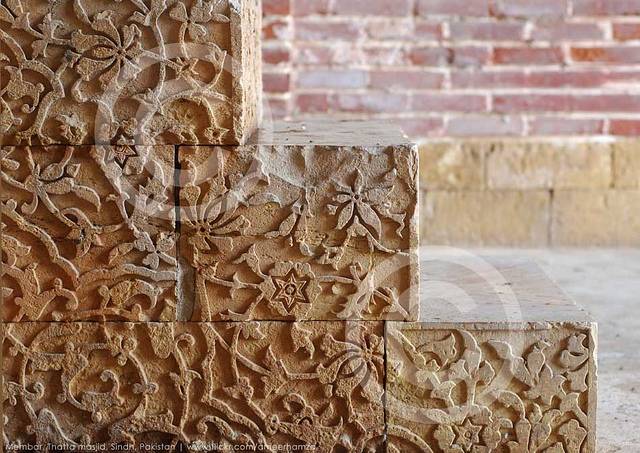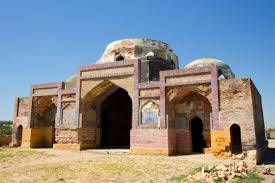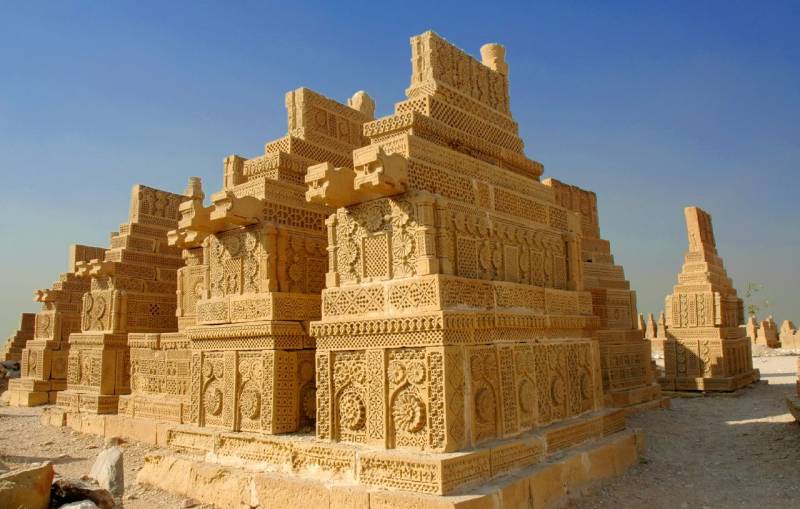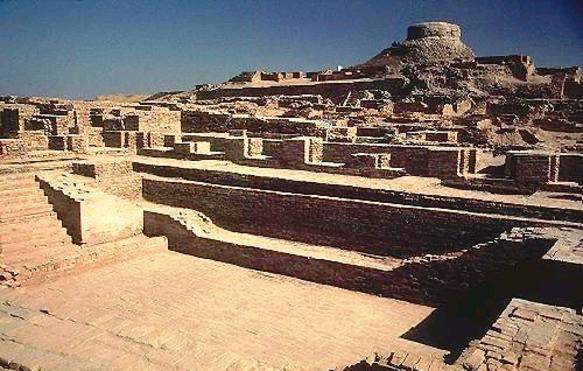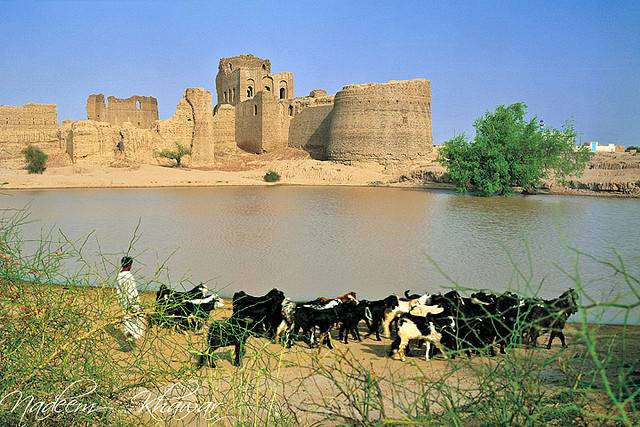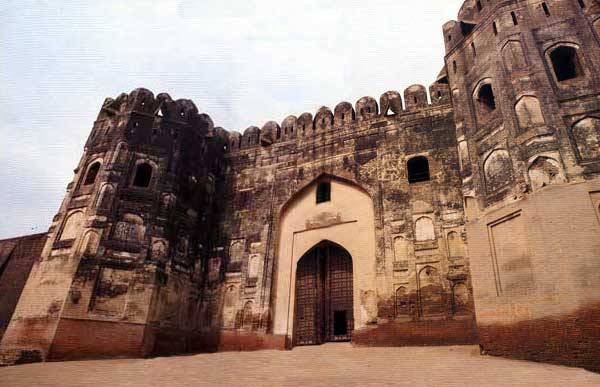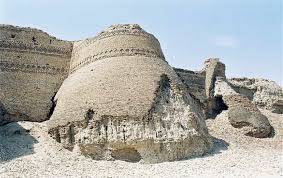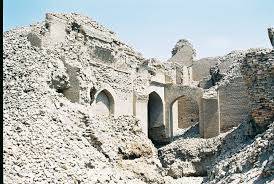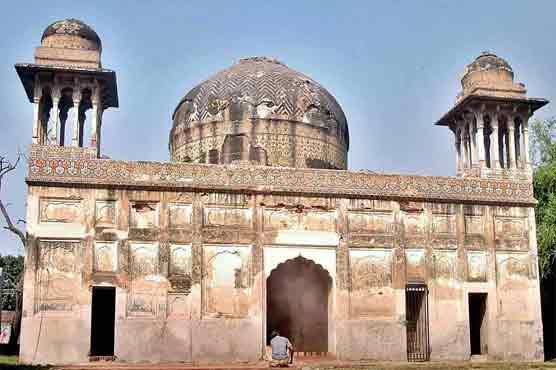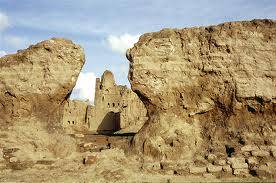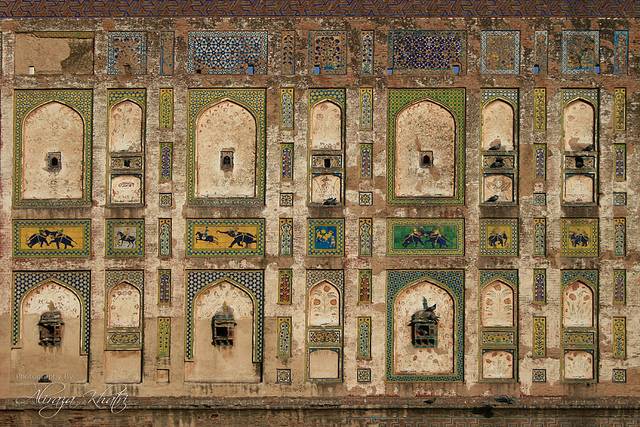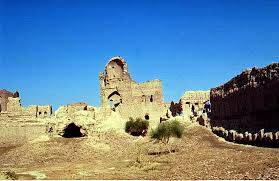Dr. Shaukat Mahmood
In sura 59, al-Hashr in ayah 2, Allah says,
“Fa’tabiru ya ulul-absar”,
Tr: Take warning, then, O ye, with eyes, (the
of wisdom).
Care of ancient monument specifically, gained momentum during the 18th and 19th centuries. It was a response to Modernism and its corresponding architectural perspective, which eschewed sentimental attachment to old buildings and structures in favour of technological and architectural progress and change. Prior to this time most of the ancient buildings that were still standing had only survived because they either had significant cultural or religious import, or they had yet to be discovered.
The first step in any building conservation project is a sensitive assessment of its history, building material and merits. Every building has its own biography. An understanding of the whole life of a building brings an essential understanding of its features and its problems. The growth of the architectural conservation movement took place at a time of significant archaeological discovery and scientific advancement. Most ancient buildings are constructed of stone and have survived from antiquity as a result of the stability of this building material. However, stone can deteriorate rapidly without protection, particularly in our modern era of pollution and climate change. Contrary to this brick-built buildings with plenty of wooden adjuncts are more prone to rapid deterioration if not looked after properly.
In addition to the historical interest which an antiquary may cherish, these mementos of the past are valuable because they contribute significantly to the knowledge, building techniques, sociology, knowhow of the people, especially new generations; and economy of the country by acting as key historical attractions for tourists. The need of conserving historical monuments is thus not only a cultural requisite, but it is also a recipe to build and rebuild economy. Unfortunately economy, tourism, knowledge, education is not the concern of our rulers. Our prime concern remains corruption. The result is with every passing day our architectural assets and cultural history is being obliterated and no body is there to bother. The minister of our heritage speaks tirades day in and day out against his political opponent but does not say a word about the plight of our heritage.
What can one say about the political commitment to save our heritage when the Sindh government held a so called a Cultural Festival on the historic site of Mohenjodaro. The ‘great’ festival was formerly opened by Bilawal Zardari on February 02, 2014. It was indeed a criminal act to project the image of a political party and its newly installed chairman. The act of holding the festival at the world renowned protected site was condemned world-wide. A recent report published in a section of our press said, “A huge sum of $ 23 million was generated through ‘Save Mohenjodaro’ international campaign jointly run by federal government and Unesco but very little is known about the usage of that money”. Every time I visit this site I see more loss. I see almost no visitors. The Mohenjodaro museum which was in relatively good shape fifty years ago shows no sign of progress. “The visitors and local journalists claim the site is continuously decaying for the last two decades, raising the questions regarding the use of funds generated to save Mohenjodaro”. (I would like to write save within apostrophes). Though our heritage has never been in the safe hands ministers and bureaucrats have remained the mail culprits or perhaps beneficiaries. Illiterate ministers are appointed as ministers of culture and bureaucrats who have least idea about heritage become its custodian. The main aim of these high-ups is to remove the precious adjuncts from the sites and decorate their own palaces and bungalows. The Necropolis of Makli has had a variety of tombs ranging between multi-storied graves, canopies, tombs and tombs mosques. Each monument had excellent stone carvings with infinite variety of motifs. At the same time there were also fine examples of world famous blue, azure and turquoise tiles of Hala. Everything but larger tombs has been looted. Same is the fate of the necropolis of Chaukhandi and the Dabgir Mosque near Thatta. “The historic Dabgir mosque is at the mercy of plundering scavengers, with its degradation of panels, spandrels and arches’ showing the tough times it continues to face while a row between the Sindh government’s Department of Culture and Department of Antiquities is adding to its woes.”
The plight of Lahore monuments is another sordid and morbid story. There are six prime monuments, Badshahi Mosque, Lahore Fort, Jahangir’s Tomb, Shalamar Garden, Tomb of Nurjahan and Wazir Khan’s Mosque. Only the Badshahi Mosque is in relatively better condition the rest are deteriorating day by day. Neglect, vandalism and dishonesty are sucking the spirit and blood out of these monuments.
Lahore Fort is one of the prime monuments of Lahore. This centuries old relic existed much before the arrival of the Mughals. Sultan Mahmud of Ghazna when he annexed Punjab to his domain he appointed his beloved ghulam Ayaz as the governor. He used this fort as his residence. This fort is not a fort in the military sense rather it’s a palace. Mughal emperor Akbar rebuilt the and thus from a mud structure it was transformed into a brick and stone structure. At that time its main gate was on the eastern side now called Masti Gate or Maseeti Gate. It was on this account that Jodha Ba’i Akbar’s wife built the Begum Shahi Mosque opposite this main gate. Both the Masti Gate, as well as Begum Shahi Mosque is in bad shape. The Begum Shahi Mosque has suffered the most and it is almost lost in houses built so close to it in violation of all legislation.
Other monuments that have suffered within the fort are the Royal Bath, Shahjahani Khwabgah, Makatib Khana, the Royal Kitchen, and the Great Mural Wall. Roof of the Shish Mahal suffered for neglect and was ‘repaired’ by a group of so called experts. Its condition has further deteriorated. Naulakha and adjacent building of Shish Mahal has lost quite a few of its precious stones. The takht in the middle of the circular pond has also been stripped of its precious adjuncts some by Sikhs and some by Pakistani Sikhs. Story below the Shish Mahal is closed to public thus its care is no longer required. The Great Mural Wall is also suffering and its present state has drifted it total loss within next 10-15 years.
Very few people know about the Kuri da Bagh. This is the tomb of Marie Charlotte daughter of a French officer M. Allard. The tomb exists to the east of main road from old Anarkali to Jain Mandir (that too is gone).This area is known as Kuri Da Bagh (Daughter’s Garden) named after the French officer’s daughter. The garden in which this tomb existed was laid by General Ventura (Jean-Baptiste Ventura, born Giovanni Battista Reuben also Rubino) a coach to Sikh army. “French General M. Allard an officer in the service of Maharaja Ranjit Singh was residing in the same garden remained in service from 1822 to 1889. The daughter of General M. Allard Marie Charlotte died on April 5 in 1827 in Lahore and she was buried in the north-west corner of this garden. General H. Allard also died due to heart attack in January, 1889 during the campaign of Peshawar and his body was brought to Lahore and buried by the side of his daughter in the same tomb. It is a small tomb with a dome octagonal in plan. On the top of the main entrance, a tablet in Persian script is fixed bearing the name of the bidder and the death date of Marie Charlotte.”
There is no proper and respectable approach to Jahangir’s Tomb. Adjacent to Jahangir’s tomb stands the Tomb of Asif Khan. The lesser said the better about this ill-fated monument. Outside the boundary wall there are house almost attached to the wall. Inhabitants of these houses enjoy the luxury of throwing all their litter into the premises of Asif Khan’s Tomb. A pavilion on the northern extremity is in ruinous state and no remedy is ever seen forthcoming. As a matter of fact there is no approach to this tomb except an askew hole-like door adjacent to the petit mosque standing in the west of Akbari Sara’i, a forecourt of Jahangir’s Tomb. Nearly all chambers of this sara’i are in shambles.
As a cosmetic treatment only that portion of Jahangir has been maintained which is generally visited by the visitors Northern, eastern and southern flanks remain totally neglected. The tomb of Jahangir’s love-lady and wife Nurjahan is totally open for all sorts of vandalism. Even the boundary wall is not there. It lawns provide good pitches for upcoming cricketers of the nation. Kite-fliers also grab their share.
In the vicinity of the University of Engineering and Technology, Lahore there were a number of outstanding Mughal architectural landmarks. They too are in the process of slow death. One monument belongs to the Sikh period. This is a Lilliputian memorial of General Paolo Crescenzo Martino Avitabile (Abu Tabela for Sikhs) (25 October 1791 – 28 March 1850). He was an Italian soldier, mercenary and adventurer. He joined the army of Maharaja Ranjit Singh in 1827, and later also received various civilian appointments. In 1829 he was made administrator of Wazirabad and in 1837 he succeeded Hari Singh Nalwa as governor of Peshawar. He remained in the Punjab until the assassination of Maharaja Sher Singh in 1843, after which he retired to Italy, where his rank as a general was confirmed and he was knighted. Avitabile was also a scholar and an engineer he worked very closely with the most brilliant Sikh engineer Lehna Singh Majithia. This little monument of Avitable has been encroached upon by numerous auto workshops on G.T. Road opposite UET. For the Department of Museums and Archaeology it was an easy job to shift this monument to Lahore Museum but no one paid heed. The house where Avitable resided in Peshawar, close to famous site of Goregathri is also in a ruinous state today.
Among the Mughal monuments of this are known as Baghbanpura are Gulabi Bagh Gateway, Tomb of Da’i Angah, Budhu ka Ava, Serve wala Maqbara, Tomb of Ali Mardan Khan, Anguri Bagh (now totally annihilated), Filtration Plant of Shalamar Bagh, Bara-hatta Well of Shalamar Bagh, and Shalamar Bagh itself. None of these mementos of the past is in a state of appreciation. It is believed that Shalamar Bagh was surrounded by many other gardens. In the east it had Bagh-i Dara(Shikoh), in south Gulabi Bagh, in north Chandni Bagh and in the south Angoori Bagh. Nothing survives.
The portion of Qur’anic ayat that I quoted at the beginning of this article is regarding the incident when Jews were ordered under Allah’s command to leave the city of Madina. Their conspiracies had become a threat to the new religion. When the Jews were leaving they packed their belongings on animals and carts and set their houses on fire. The burnt houses became symbols of non-cooperating community. Qur’an itself comprises several incidents of the past that provides guidelines for future hence the importance of conservation.

